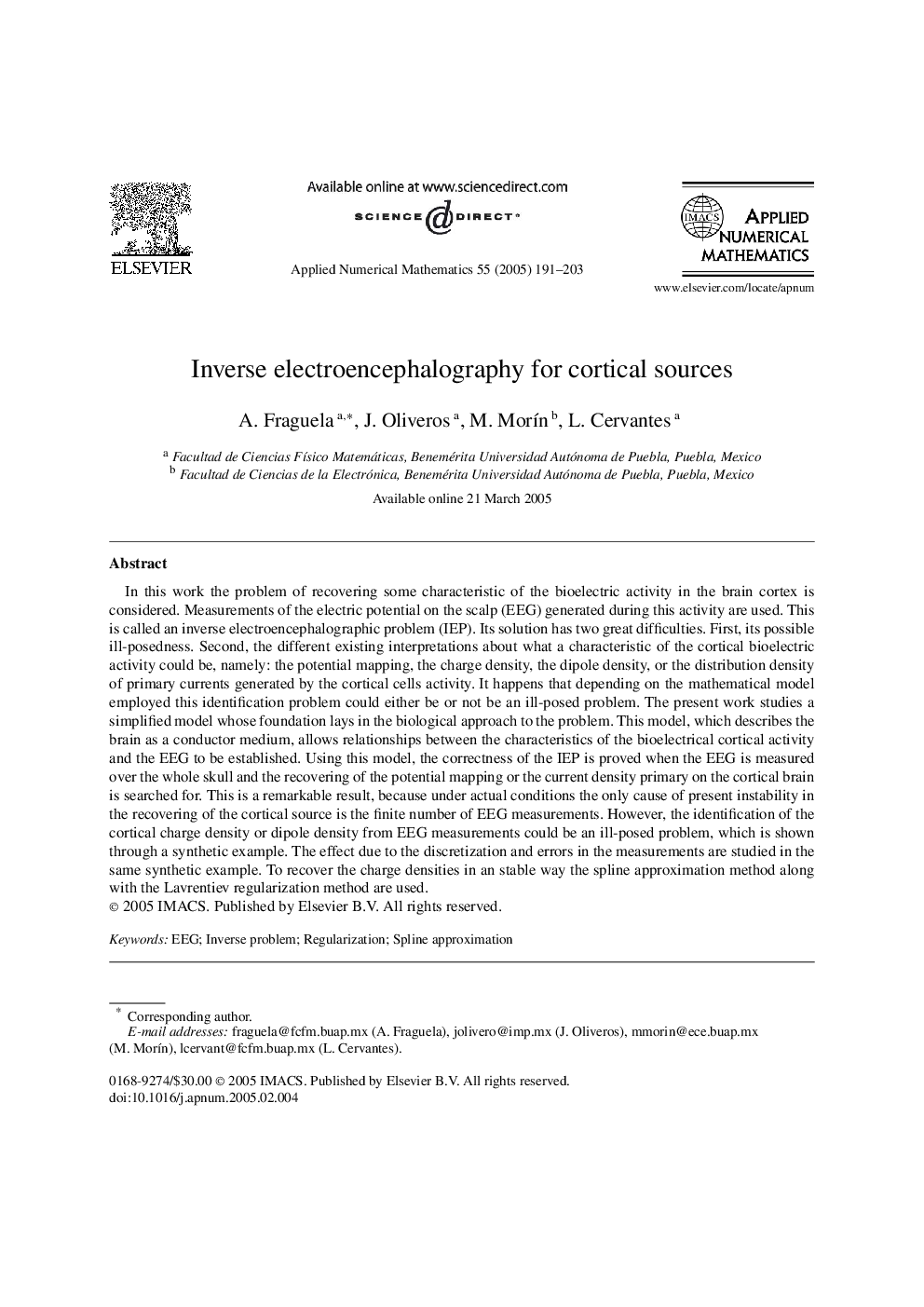| Article ID | Journal | Published Year | Pages | File Type |
|---|---|---|---|---|
| 9511487 | Applied Numerical Mathematics | 2005 | 13 Pages |
Abstract
In this work the problem of recovering some characteristic of the bioelectric activity in the brain cortex is considered. Measurements of the electric potential on the scalp (EEG) generated during this activity are used. This is called an inverse electroencephalographic problem (IEP). Its solution has two great difficulties. First, its possible ill-posedness. Second, the different existing interpretations about what a characteristic of the cortical bioelectric activity could be, namely: the potential mapping, the charge density, the dipole density, or the distribution density of primary currents generated by the cortical cells activity. It happens that depending on the mathematical model employed this identification problem could either be or not be an ill-posed problem. The present work studies a simplified model whose foundation lays in the biological approach to the problem. This model, which describes the brain as a conductor medium, allows relationships between the characteristics of the bioelectrical cortical activity and the EEG to be established. Using this model, the correctness of the IEP is proved when the EEG is measured over the whole skull and the recovering of the potential mapping or the current density primary on the cortical brain is searched for. This is a remarkable result, because under actual conditions the only cause of present instability in the recovering of the cortical source is the finite number of EEG measurements. However, the identification of the cortical charge density or dipole density from EEG measurements could be an ill-posed problem, which is shown through a synthetic example. The effect due to the discretization and errors in the measurements are studied in the same synthetic example. To recover the charge densities in an stable way the spline approximation method along with the Lavrentiev regularization method are used.
Related Topics
Physical Sciences and Engineering
Mathematics
Computational Mathematics
Authors
A. Fraguela, J. Oliveros, M. MorÃn, L. Cervantes,
